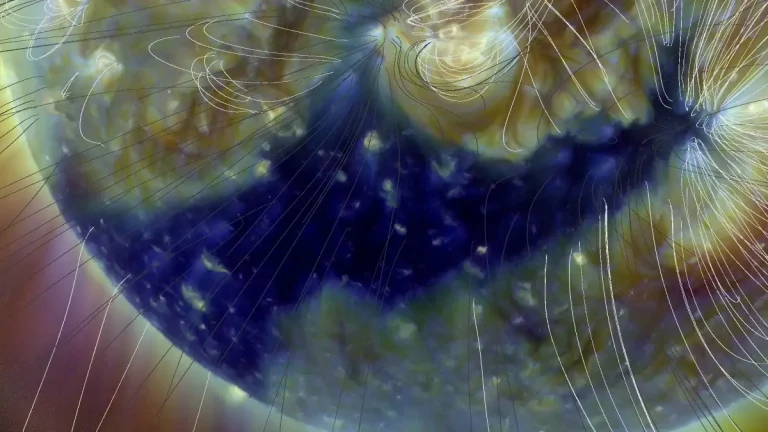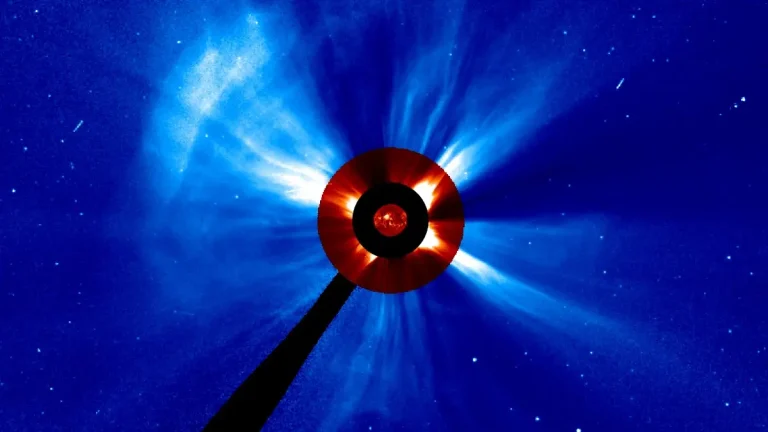CH HSS sparks G2 – Moderate geomagnetic storm
Elevated geomagnetic activity was recorded on Earth on June 13, 2025, due to the waning effects of a negative polarity coronal hole high-speed stream and possible transient effects.

Elevated geomagnetic activity was recorded on Earth on June 13, 2025, due to the waning effects of a negative polarity coronal hole high-speed stream and possible transient effects.

The U.S. Space Weather Prediction Center (SWPC) issued a G4 – Severe geomagnetic storm watch for June 2, 2025, following the eruption of a powerful, Earth-directed coronal mass ejection (CME) associated with a long-duration M8.1 solar flare from Active Region 4100. The CME is forecast to arrive at Earth late on June 1, with geomagnetic storm conditions expected to intensify through June 2.

A G3 – Strong geomagnetic storm was observed at 02:16 UTC on May 29, 2025, triggered by the arrival of a negative polarity coronal hole high-speed stream at Earth. Coronal hole high-speed streams, and their associated transition zones called co-rotating interaction regions (CIRs), can create CME-like shock waves that are capable of producing strong geomagnetic disturbances and widespread auroras.

A coronal mass ejection produced by a filament eruption on April 13 impacted Earth’s magnetic field at 16:37 UTC on April 15, sparking a G2 – Moderate geomagnetic storm. A G3 – Strong geomagnetic storm watch is in effect for April 16 due to the anticipated arrival of additional CMEs.

Earth is currently experiencing heightened solar wind conditions and geomagnetic storming due to the passage of a co-rotating interaction region (CIR) ahead of a high-speed stream from a large coronal hole in the southern hemisphere.

A G1 – Minor geomagnetic storm watch is in effect for January 31 and February 1, 2025, due to a coronal hole high-speed stream (CH HSS) influence coupled with the potential arrival of a CME.

Two coronal mass ejections (CMEs) produced on December 29, 2024, impacted Earth on December 31, causing G4 – Severe geomagnetic storm on January 1, 2025. A slow return to nominal levels is expected by late on January 2. Late on January 3 to early on January 4, a potential glancing blow from the January 1 CME is likely to cause another enhancement.

At least two coronal mass ejections (CMEs) are heading toward Earth, with impacts expected on December 31 and January 1, 2025. The first CME — much stronger, was produced by a filament eruption associated with an M2.0 flare at 04:30 UTC on December 29 from Active Region (AR) 3939. This resulted in an asymmetric, partial-halo CME first seen in NASA coronagraph imagery at approximately 06:24 UTC.

A coronal mass ejection (CME) produced on December 13, 2024, impacted Earth at 05:19 UTC on December 17, sparking G1 – Minor geomagnetic storming. The K-index reached 5 at 08:07 UTC, with effects limited to areas poleward of 60 degrees geomagnetic latitude. Enhanced solar wind conditions, driven by a positive polarity coronal hole high-speed stream (CH HSS), are expected to continue through December 18. Meanwhile, solar activity remains low, with a 30-40% chance of M-class flares and a 5% chance of X-class flares through December 19.

Coronal mass ejection (CME) produced by X1.8 solar flare on October 9, 2024, impacted Earth at 15:15 UTC on October 10, at nearly 2.4 million km/h (1.5 million miles per hour), triggering G4 – Severe geomagnetic storm.